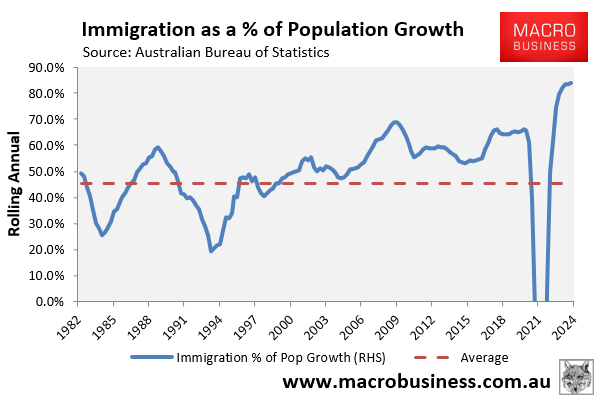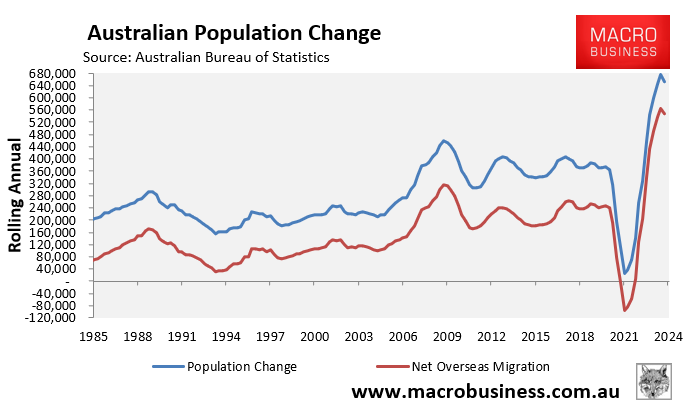On Thursday, the Australian Bureau of Statistics (ABS) revealed that Australia’s population rose by a record 675,600 in the year to September 2023, which retraced marginally to 651,200 at the end of the December quarter:
Australia’s annual population growth of 2.5% was the highest rate since 1952 and dwarfs the average growth of advanced nations:
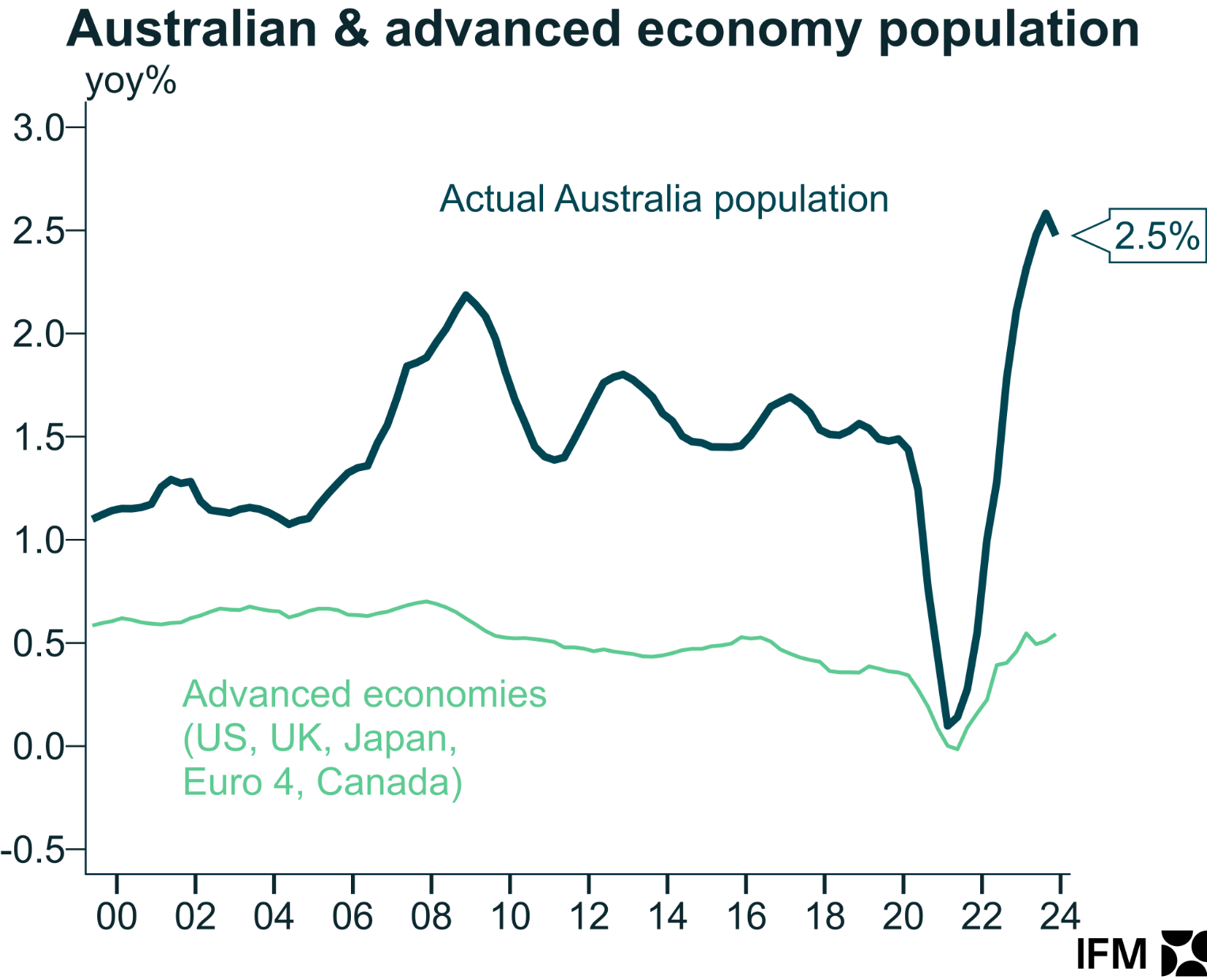
Advertisement
However, while Australia’s population is booming, the nation’s residents are choosing to have fewer children.
The next chart shows that there were 287,000 births in Australia in 2023, the lowest reading since the year to March 2007.

Advertisement
These 287,000 births were offset by 183,100 deaths, delivering a natural increase of only 103,900 people in 2023:
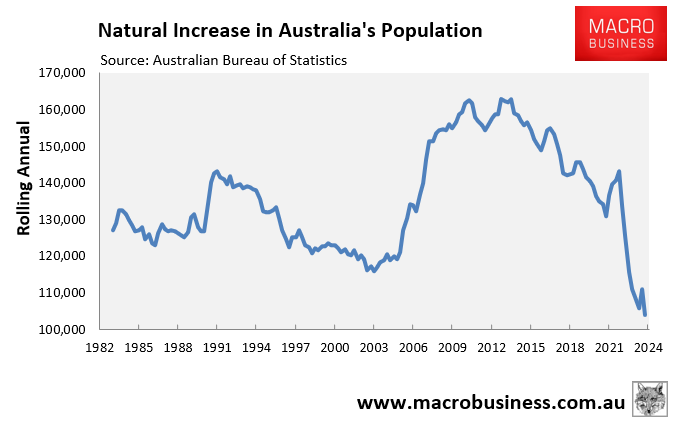
In fact, Australia’s birth rate has fallen to a record low 1.06%, according to Alex Joiner at IFM Investors:
Advertisement

As we know, the collapse in births and natural increase was more than compensated for by a record boom in net overseas migration (NOM).
Australia’s NOM hit an all-time high 564,645 in the September quarter of 2023 before retracing to 547,267 in the December quarter.
Advertisement
This surge in NOM was driven by a record 751,500 migrant arrivals in 2023:
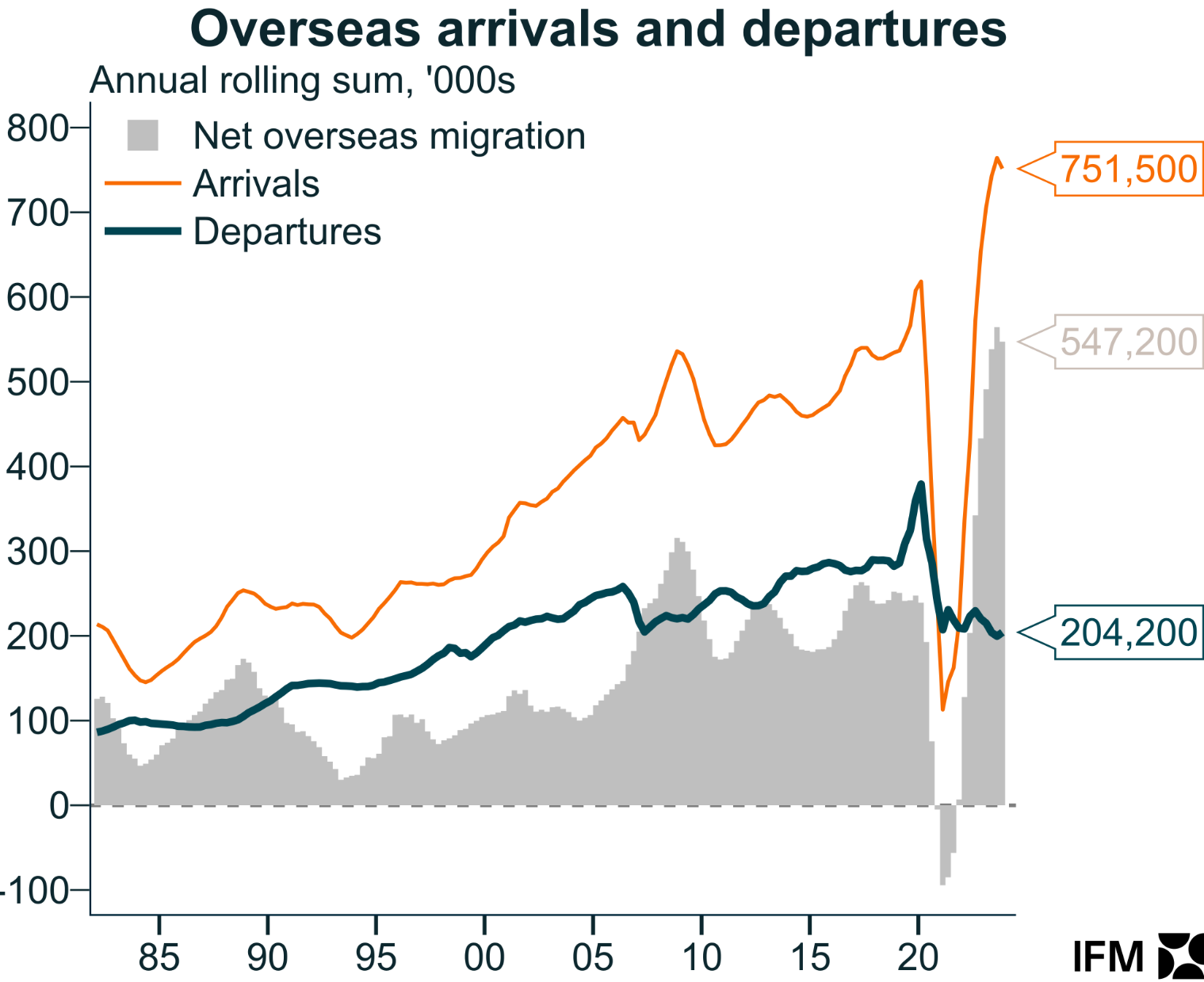
It is fair to say that immigration has a crowding-out effect on local birth rates.
Advertisement
Research published by HSBC in January showed that “a 10% increase in house prices leads to a 1.3% drop in birth rates, and an even sharper fall among renters”.
Record immigration is a key driver of Australia’s rising home values and rents, which is subsequently delaying plans to start a family.
As MB reader blindjustice noted in the comments yesterday:
Advertisement
“There is a negative feedback loop in play. At high rates of migration and/or low availability of housing, then migration equals higher house prices and rental prices. This, in turn, results in a lower fertility rate which, in turn, is backfilled by migration via government policy”.
That is a nice summary of the situation in play in Australia, where NOM comprises a record share of Australia’s population growth.
